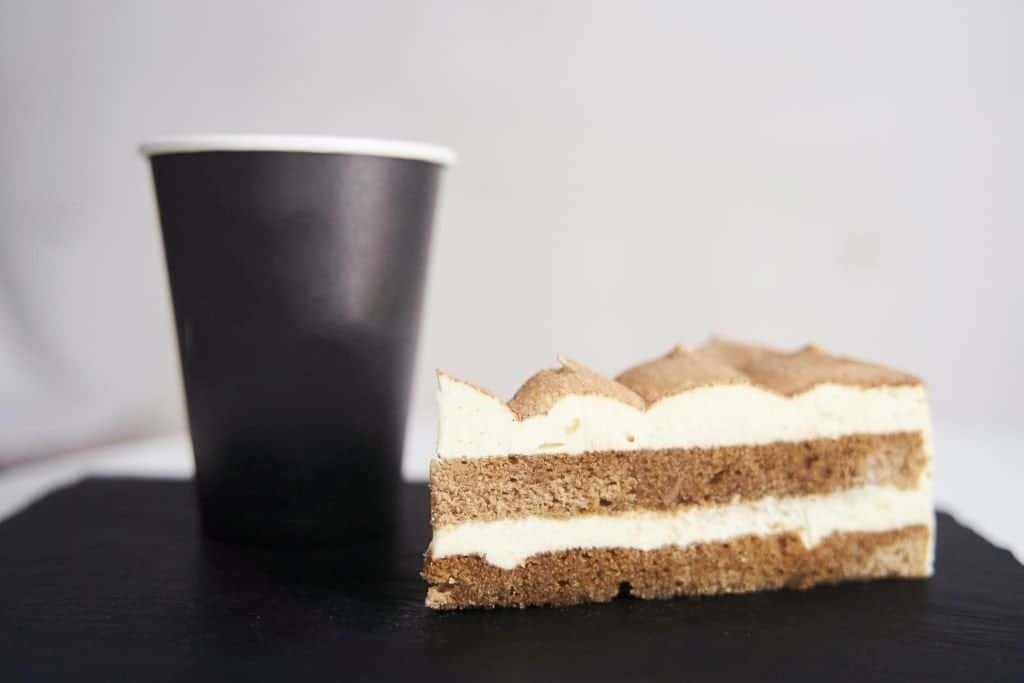Drying coffee beans is a crucial step in the coffee processing method. The process of drying coffee beans is essential to ensure that the beans are stored properly and retain their flavor. There are several methods for drying coffee beans, and each method has its own advantages and disadvantages.
One of the most common methods for drying coffee beans is by spreading them out under the sun on raised beds or patios. This method is known as the natural processing method and is often used in countries with hot and dry climates. The natural processing method is preferred by some coffee growers because it is less expensive and requires less equipment compared to other methods.
However, this method can take longer and may result in inconsistent drying if the weather is not ideal. Other methods for drying coffee beans include using dedicated mechanical coffee dryers and air drying. Each method has its own benefits and drawbacks, and the choice of method will depend on several factors, including the type of coffee bean and the desired flavor profile.
The Coffee Drying Process

Coffee drying is a crucial step in the coffee production process. It involves reducing the moisture content of coffee beans to the optimal level for storage and transport. There are several methods of coffee drying, each with its own advantages and disadvantages.
Drying Coffee Under The Sun
Drying coffee under the sun is the traditional method of drying coffee beans. It involves spreading the beans out on drying tables or patios and exposing them to sunlight. The process can take up to two weeks, depending on the weather conditions and the humidity levels.
One of the main advantages of this method is that it is inexpensive and requires minimal equipment. However, it is highly dependent on weather conditions and can result in inconsistent drying. Additionally, it can be challenging to control the drying process, which can lead to mold growth and other quality issues.
Mechanical Dryers
Mechanical dryers are a more modern method of drying coffee beans. They involve using machines to control the temperature and humidity levels during the drying process. This method is faster and more consistent than drying coffee under the sun, and it allows for greater control over the drying process.
There are several types of mechanical dryers available, including drum dryers, silo dryers, and bed dryers. Each has its own advantages and disadvantages, depending on the specific needs of the coffee producer.
Additional Processing Methods
In addition to sun drying and mechanical drying, there are several other methods of processing coffee beans. These include:
-
Raised bed drying: This method involves spreading the beans out on raised beds to dry. It allows for better air circulation and can result in a more consistent drying process.
-
Vacuum drying: This method involves using a vacuum to reduce the air pressure around the beans, which speeds up the drying process.
-
Freeze drying: This method involves freezing the beans and then using a vacuum to remove the moisture. It is a more expensive method but can result in a higher-quality product.
Types of Coffee Processing Methods
Coffee processing methods refer to the different ways in which coffee beans are processed after they are harvested. There are three main types of coffee processing methods: the dry or natural coffee bean processing method, the wet (or ‘washed’) coffee bean processing method, and the semi-washed coffee bean processing method. Additionally, there is the honey processed coffee method, which is a hybrid of the natural and washed methods.
The Dry or Natural Coffee Bean Processing Method
The dry or natural coffee bean processing method is the oldest and most traditional method of processing coffee beans. In this method, coffee cherries are left to dry in the sun for several weeks until they are completely dry. Once the cherries are dry, they are hulled to remove the outer layers, revealing the green coffee beans inside.
This method is often used in areas with low humidity and ample sunshine. The dry method produces coffee beans with a unique flavor profile that is characterized by fruity and wine-like notes.
Wet Coffee Bean Processing Method
The wet or washed coffee bean processing method is a more modern method of processing coffee beans. In this method, coffee cherries are pulped to remove the outer layers, leaving behind the mucilage-covered beans. The beans are then fermented in water for up to 48 hours to remove the mucilage. Once the fermentation is complete, the beans are washed and dried in the sun or using mechanical dryers.
This method is often used in areas with high humidity and limited sunshine. The wet method produces coffee beans with a cleaner and brighter flavor profile that is characterized by floral and citrus notes.
The Partially Washed Coffee Bean Processing Technique
The semi-washed coffee bean processing method is a hybrid of the natural and washed methods. In this method, coffee cherries are pulped to remove the outer layers, leaving behind the mucilage-covered beans. The beans are then washed to remove some of the mucilage, but not all of it. The beans are then dried in the sun or using mechanical dryers.
This method produces coffee beans with a flavor profile that is somewhere between the dry and wet methods. The semi-washed method is not as common as the other two methods, but it is gaining popularity in some areas.
Coffee Beans Processed with Honey
Honey processed coffee is a relatively new method of processing coffee beans that is gaining popularity among specialty coffee roasters. In this method, coffee cherries are pulped to remove the outer layers, leaving behind the mucilage-covered beans. The beans are then dried in the sun or using mechanical dryers, but unlike the other methods, the mucilage is not removed.
This method produces coffee beans with a unique flavor profile that is characterized by a sweetness similar to honey. The color of the beans can range from light yellow to dark brown, depending on the amount of mucilage left on the beans during the drying process.
Overall, the choice of coffee processing method depends on various factors such as climate, availability of resources, and desired flavor profile. Green coffee beans are the raw, unroasted coffee beans that are used to make coffee. The parchment is the protective layer that surrounds the green coffee beans during the drying process. Fermentation is the process of breaking down the mucilage on the coffee beans. Coffee processing methods play a crucial role in determining the flavor profile of coffee.

Drying Oily Coffee Beans
Tips for Drying Coffee Beans with High Oil Content
Coffee beans that are oily can be a challenge to dry. However, there are several ways to dry oily coffee beans that can help to preserve the flavor and aroma of the coffee. The first step is to spread out the beans on a baking sheet or a clean, dry surface. If you are using a dehydrator, set it to the lowest setting and place the coffee beans in the dehydrator.
Once the coffee beans are spread out, the next step is to absorb the oil from the beans. This can be done by using an oil-absorbing material such as salt, rice or paper towels. Place the coffee beans in a container with the oil-absorbing material and leave them for a few hours. The oil will be transferred to the material, leaving the coffee beans dry.
Optimal Techniques for Drying Coffee Beans with High Oil Content
To reduce the oiliness of coffee beans, a recommended approach is to blend them with a lighter roast. First, place both types of beans into a tightly sealed ceramic container and gently swirl and mix them together. The light roast beans will gradually absorb some of the oil from the oily dark roast beans, evening out the oiliness of the mixture. This will make the beans easier to dry, and the end result will be a more balanced flavor profile.
Ineffective Methods for Drying Oily Coffee Beans
The worst way to dry oily coffee beans is to use a microwave or an oven. These methods can cause the beans to become over-dried and lose their flavor. Additionally, microwaving oily coffee beans can cause the oil to explode, making a mess and potentially damaging the microwave.
Preventing the Development of Oily Coffee Beans
The best way to prevent oily coffee beans is to store them properly. Oily coffee beans are often the result of over-roasting or improper storage. To prevent oily coffee beans, store them in an airtight container in a cool, dry place. Avoid storing them in the refrigerator or freezer, as this can cause the beans to absorb moisture and lose their flavor.
Drying oily coffee beans can be a challenge, but with the right techniques, it is possible to preserve the flavor and aroma of the coffee. The best way to dry oily coffee beans is to mix them with a lighter roast, while the worst way is to use a microwave or an oven. To prevent oily coffee beans, store them properly in a cool, dry place.
Storing Coffee Beans Correctly

When it comes to storing coffee beans, it’s essential to keep them in a dry, airtight container to avoid moisture buildup. Moisture is one of the most significant factors that can impact the quality of coffee beans. If coffee beans are not stored correctly, they can absorb moisture, which can lead to mold growth and affect the flavor of the coffee. Here are a few tips on how to store coffee beans correctly:
Moisture Control: Storing Coffee Beans Correctly
The best way to store coffee beans is to keep them in a dry, airtight container. Coffee beans are hygroscopic, which means they can absorb moisture from the air. When coffee beans absorb moisture, they can lose their aroma and flavor. Therefore, it’s essential to store coffee beans in a container that prevents moisture from entering.
How to Remove Water From Coffee Beans
If coffee beans have absorbed moisture, it’s essential to remove the water content before storing them. The following methods can be used to remove water from coffee beans:
- Mechanical Drying: Coffee beans can be dried using a coffee dryer. This method is often used in commercial settings and involves using heat and airflow to remove moisture from coffee beans.
- Manual Drying: Coffee beans can also be dried manually. This method involves spreading the coffee beans out in the sun or using a fan to remove moisture from the beans.
- Dry Milling: Dry milling is a method used to remove the parchment and husk from coffee beans. During this process, the coffee beans are dried, which removes the water content.
FAQ
Can I store coffee beans in the fridge or freezer to remove moisture?
No, storing coffee beans in the fridge or freezer can cause moisture buildup, which can affect the quality of the coffee.
How long can I store coffee beans?
Coffee beans can be stored for up to six months in an airtight container. However, for the best flavor, it’s recommended to use coffee beans within two weeks of roasting.
Can I store coffee beans in their original packaging?
Coffee beans’ retail packaging is not ideal for long-term storage. It’s recommended to invest in storage canisters with an airtight seal.
In conclusion, storing coffee beans correctly is essential to maintain the quality of their coffee. By controlling moisture levels, coffee farmers can ensure even drying of the beans, which can impact the flavor and aroma of the coffee.
Conclusion
In conclusion, drying coffee beans is a crucial step in the coffee processing method that affects the quality of the final product. Coffee producers need to understand the different drying methods available and choose the best one for their coffee type, environment, and drying control systems.
Drying tables and raised beds are the most common methods used in coffee-growing regions, but new technologies such as mechanical dryers are becoming more popular due to their ability to reduce drying time and improve the quality of their coffee.
Throughout the drying process, it is essential to monitor the moisture content of the coffee beans to ensure that they are not over or under-dried, which can affect the taste and aroma of the coffee.
Coffee producers should also take into consideration the environmental factors that affect the drying process, such as temperature, humidity, and sunlight exposure.
By separating the coffee cherry’s fruit from the bean, coffee producers can reduce the drying time and improve the quality of the coffee.
In summary, drying coffee beans is a complex process that requires careful consideration of the coffee type, drying method, drying control systems, and environmental factors. To learn more about coffee processing and drying, coffee producers can consult with experts in the field or attend coffee processing workshops.




